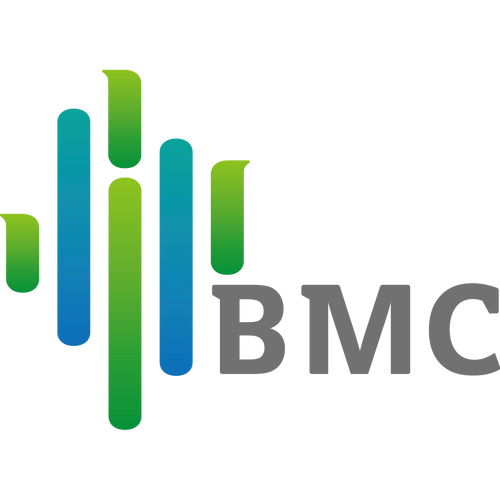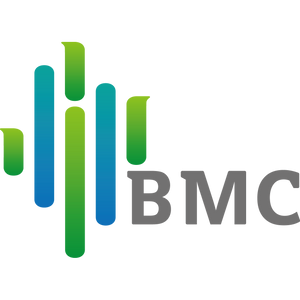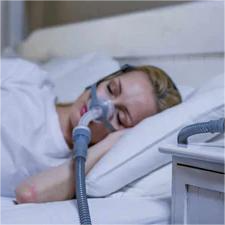CPAP parameters include IPAP (inspiratory positive airway pressure), EPAP (expiratory positive airway pressure), Rise time (time to pressure rise), BPM (backup frequency), Ti (inspiratory time), Trigger (inspiratory trigger) and Cycle (expiratory switching).
The parameters of non-invasive ventilator are less than those of invasive ventilator, but these parameters are very important to improve the effectiveness and patient comfort of non-invasive ventilator.
The most important thing for the use of non-invasive ventilator is the cooperation of patients, and the parameters should be constantly adjusted according to the condition and comfort of patients.

1.IPAP
IPAP is a parameter in BiPAP ventilation mode, and the difference between IPAP and EPAP is PS.
Function
When inhaling, IPAP increases the gas pressure at the opening of the airway, assists patients to do work, relieves respiratory muscle fatigue and reduces oxygen consumption. At the same time, it produces pressure difference with intrapulmonary pressure and increases tidal volume and minute ventilation.
How to adjust IPAP?
IPAP can be set up from 8 to 12 cmH2O and increased to the appropriate treatment level within 5 to 20 min. RAMP (delayed boost) function can also be turned on. The commonly used regulation range is 8 ~ 25 cmH2O. When the IPAP exceeds 25 cmH2O, it may cause gastrointestinal qi or other side effects.
When EPAP is unchanged, when IPAP is regulated, PS level is regulated. PS is generally greater than 5 cmH2O;. Under the condition that patients' inspiratory effort, airway resistance and chest and lung compliance remain unchanged, the greater the PS, the greater the tidal volume.
2.EPAP
EPAP is a parameter that all non-invasive ventilation modes have. If there is only one parameter, it is CPAP mode.
Function
EPAP can counteract the effect of endogenous PEEP, improve pulmonary compliance, increase functional residual capacity, re-dilate alveoli, improve Vmax Q imbalance, increase alveolar-arterial oxygen partial pressure difference, increase oxygenation, reduce cardiac blood volume, reduce heart load, and promote the regression of pulmonary interstitial and alveolar edema.
How to adjust EPAP?
In order to counteract the commonly used range of 4 ~ 6 cmH2O of endogenous PEEP,EPAP, it is generally no more than 8 cmH2O. Hypoxic respiratory failure (type I respiratory failure) can reach 4 ~ 12 cmH2O or even higher.
The higher the EPAP, the greater the basic flow rate of maintaining EPAP during exhalation, the cleaner the exhaled CO2 in the residual mask and tube, and the less repeated breathing. Generally, when the EPAP reaches 4 cmH2O, the CO2 in the mask and pipeline can be effectively removed.
3.Rise time
The time at which the pressure reaches the target pressure after the inspiratory pressure is triggered. Generally set 0.05 ~ 0.3 S (or 2 ~ 3 gears). The purpose of regulation is to improve the comfort of patients and reduce the work done by breathing.
4.BPM and Ti
Back-up frequency and inspiratory time need to be set at Sqt. When the patient is stable, the setting of BPM needs to be 2 ~ 3 times / min lower than the spontaneous respiration rate.
The adult Ti can be set to 0. 8-1. 2 seconds in SPUBG T mode, which is as close as possible to the inspiratory time of spontaneous breathing.
Some ventilators can set the inspiratory / expiratory ratio and indirectly set Ti.
5.Trigger
Trigger is the beginning of the decision to "inhale", and a good trigger is of great significance to man-machine coordination. Trigger delay, invalid trigger, automatic trigger, and double trigger are all unwanted.
The principle of trigger is that under the premise of no false trigger, the more sensitive the better.There are mainly two kinds of trigger: pressure trigger and velocity trigger. The pressure trigger is generally-0.5 ~-2 cmH2O, and the velocity trigger is 2 ~ 5 L/min. A large number of air leakage and sudden air leakage can easily cause the ventilator to trigger automatically.
6.Cycle
Decide whether to switch from inhaling to exhaling.Generally speaking, the traffic is switched, which is the percentage of the traffic falling to the peak.The larger the percentage, the more sensitive the switch, and the shorter the inspiratory time.
The inspiratory time can be adjusted by adjusting the expiratory switching sensitivity. A large amount of air leakage will cause the ventilator to be unable to switch for a long time, which requires a backup protection mechanism.
Summary
CPAP is convenient and safe in clinical use, can effectively control the disease, improve the quality of life of patients, avoid invasive treatment such as endotracheal intubation and tracheotomy, reduce complications, reduce mortality and save medical expenses.Therefore, it is more and more widely used in clinic. Mastering its mode and parameter adjustment is beneficial for health care workers to operate more skillfully.
If the clinical symptoms and signs and arterial blood gas are not improved, it is suggested that the therapeutic effect is poor, and it is necessary to adjust the ventilator parameters as soon as possible, and consider whether to change to tracheal intubation artificial ventilation or other treatment schemes according to the patient's state of consciousness.So as not to delay the illness and miss the best time for rescue.



